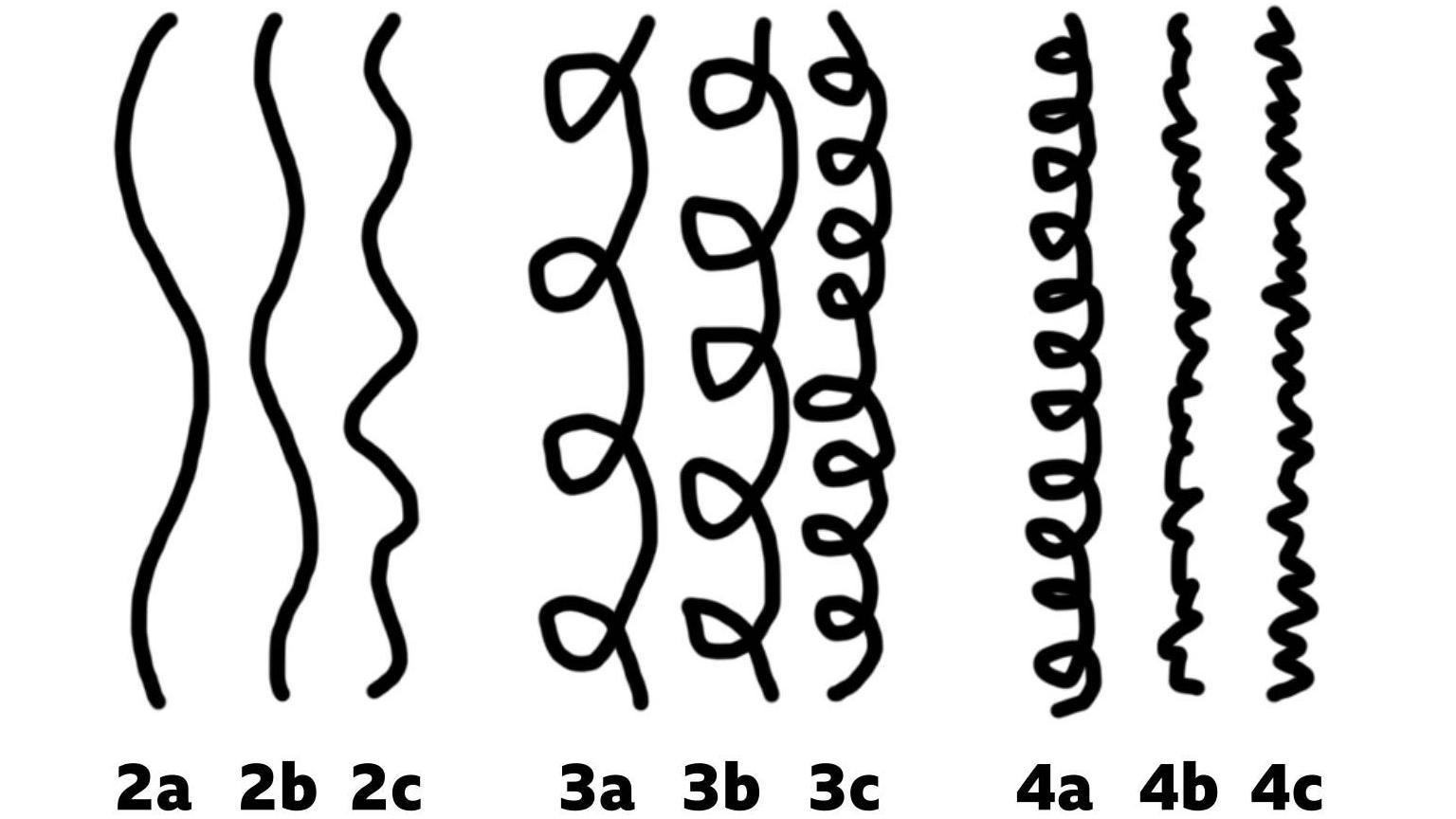Wavy locks are not merely about appearance; they represent an ongoing decision one must continually make—especially so for myself.
I devoted years to damaging my luscious curly hair using 200°C heat in order to conform to societal expectations.
However, it was during my pregnancy with my daughter that I began to wonder about why I was straightening my hair.
I aspired to be a role model for her and imbue her with a sense of pride regarding both her hair and her heritage—but my path toward understanding hair care has encountered several obstacles.
For numerous individuals who are Black or of mixed ancestry, curly hair serves as a emblem of their identity, culture, and even acceptance.
Social psychologist Dr. Johanna Lukate highlights that there is a “social tax” imposed on curly hair, which can result in “internalized and potentially intergenerational trauma” for certain individuals.
It’s not only Black individuals who feel compelled to hide their natural hair.
Dr. Lukate stated, “There’s a prevailing concept of beauty that almost everybody conforms to… hence, it follows that since the predominant standard favors long straight hair, this expectation extends to all individuals regardless of whether they have brown, blonde, or black hair.”
Many individuals struggle to find skilled hairdressers knowledgeable about curls, this challenge is especially prevalent in smaller cities and towns throughout the UK.
My personal exploration into embracing my curly hair intertwines with my mixed African-Italian background.
In southern Wales, during my childhood, people used to describe my type of hair as bushy, frizzy, and “untamed,” comparing it to something wild that needed to be controlled.

When I was 14 years old, I pleaded with my mom to take me to the hairstylist and spend £90 so she could chemically relax and press my hair. I adored how smooth and lightweight it felt afterward.
This resulted in 15 years of gradually straightening and using heated tools to style my hair into gentle waves.
Reflecting now, I believe my desire was simply to blend in with my peers. Their sleek, straight locks were the envy of mine; they seemed so effortlessly stylish.
At a later time, when I was pursuing a master’s degree in journalism, I remember an instance involving a white friend who was instructed by our course director to go home and fix her hairstyle as she couldn’t present the news with “hair like this.”
These early experiences molded my perception of my hair and my comprehension of the importance attributed to silky textures.
‘I didn’t believe I was attractive’
Paige Lewin, who advocates for hair and hosts the Texture Talks podcast, mentioned that hair straightening was seen as “nearly a rite of passage” for numerous Black teenagers.
“The best decision for me wasn’t only about becoming popular; it was also about feeling attractive. Without it, I never felt good-looking,” Paige stated.
The social media influencer mentioned that her hair progressively turned more delicate and began snapping off.
This consequently resulted in her developing an “addiction” to wigs and the elaborate long hairdos that could be created using extensions.
I began to think, ‘wow, this hair cascading down my back feels wonderful!’—and the praise was overwhelming, much like the compliments I received when I was 14 and got that relaxer.
Dr. Lukate stated that Afro hair has traditionally been misrepresented in Western societies and is associated with slavery and colonialism. These associations stem from the use of “otherness” to create distinctions among races, which ultimately served to oppress Black individuals.
As she explained, over time, this resulted in black women feeling pressured to alter themselves to meet societal standards—typically by individuals within their own community.
Paige, who has Jamaican roots, mentioned that her mother often compared her hair to “Brillo pads.”
She remembered numerous instances where having an Afro or letting your hair loose would result in being asked to adjust your headdress.
The hair might appear very healthy and well-maintained, but it hasn’t been straightened, which captures the essence of what was said.
My situation was akin to Paige’s, as my siblings teased me when I finally put away my hair straighteners upon retiring them.
“Parents essentially convince themselves that naturally curly hair is deemed unacceptable, unattractive, and lacks beauty; they also consider it unprofessional, and subsequently impart this belief onto their children,” explained Dr. Lukate.
“There is a tax to wearing curly hair in a way that is seen as beautiful again by society.
I believe it’s not merely about possessing curly hair; rather, some styling techniques for curly hair are considered more attractive than others.

The British Beauty Council
asserts that Black individuals and those from other racially diverse backgrounds typically spend approximately 25% more on health and beauty items.
Premium hair care items tend to come with a high price tag—particularly when you need several products for washing and styling your hair as I do.
My current hair care regimen lasts around an hour and includes various specialized shampoos, gels, creams, and oils to achieve voluminous-looking hair.
The high-street hair brand Umberto Giannini recently employed the hashtag #NoCurlTax in a social media initiative to highlight what they referred to as the “inequitable” pricing of curl-specific items, stating that “curls should not come with an additional price tag.”
Locating a sufficiently skilled hairstylist who could correctly trim curly hair, along with affording their fees, was also a challenge for Paige and several of the women Doctor Lukate talked to.
“Why is it still considered normal in the 21st century that I must journey from Bristol or Nottingham clear across to the capital just for a single haircut? The [curl] tax has really impacted me and taken a toll on my finances,” stated Paige.
Jade Pointon, a curly-haired specialist hairstylist based in Cardiff, mentioned that it all began with education.
“A lot of hairdressers haven’t received training from qualified instructors,” she stated.
When you reach Level 2 training, you ought to have experience with various haircut styles on different hair types. However, individuals are passing their exams and qualifying without actually having cut or styled curly hair.
The process begins at the highest level with the trainers. If they lack knowledge and competence, they won’t motivate upcoming hairstylists to work with curly and Afro textured hair models.
I believe we encounter plenty of obstacles as it is, and not being able to find someone to style your hair is yet another instance of the challenges faced by Black individuals.
Erin Fahiya, who is 22 years old and hails from Barry in South Wales, mentioned that she has never experienced pressure to straighten her hair. She attributed this partly to the supportive online community she discovered.
Why not go ahead and embrace it? What’s the point of hiding it? It was both empowering and comforting for me to witness black individuals accepting and rejoicing in their inherent hair textures.
I believe we should shift our attention away from straight hair and view our tresses through a new perspective to truly appreciate the beauty and versatility of curly locks.
To me, this holds significance as it connects with my cultural background, and it’s crucial to witness this representation on social media.
The message of self-love and empowerment from Erin is something I aspire to pass along and share with my own daughter.
I hope she will also feel pride in her hair and her heritage.
- Could my braids be causing more damage than benefit?
- Why individuals are taking legal action against L’Oréal due to issues with hair relaxers?
- Wavy hair helped early humans stay cooler and contributed to the development of larger brains.
- Honoring curly locks through portraiture
- Sir Tom said he wouldn’t have succeeded with curly hair.


Leave a Reply